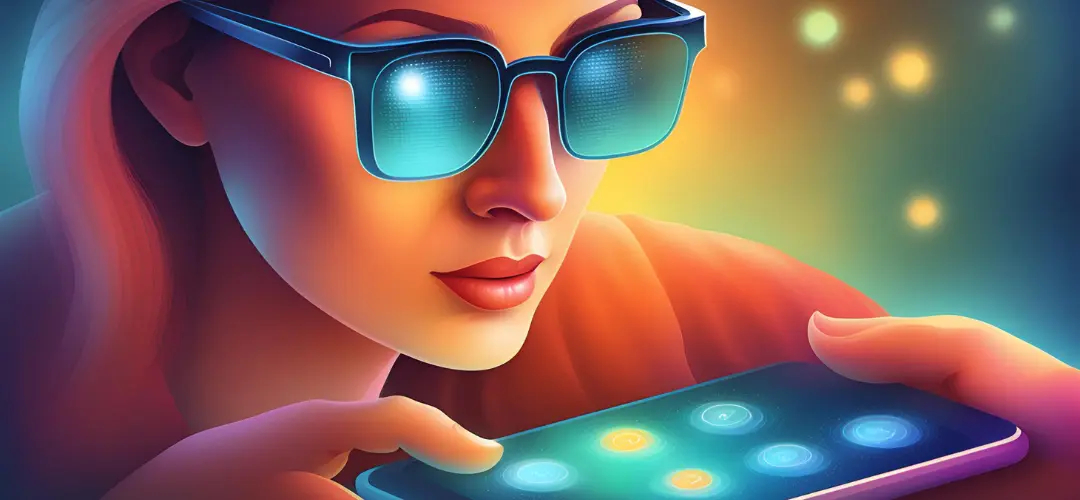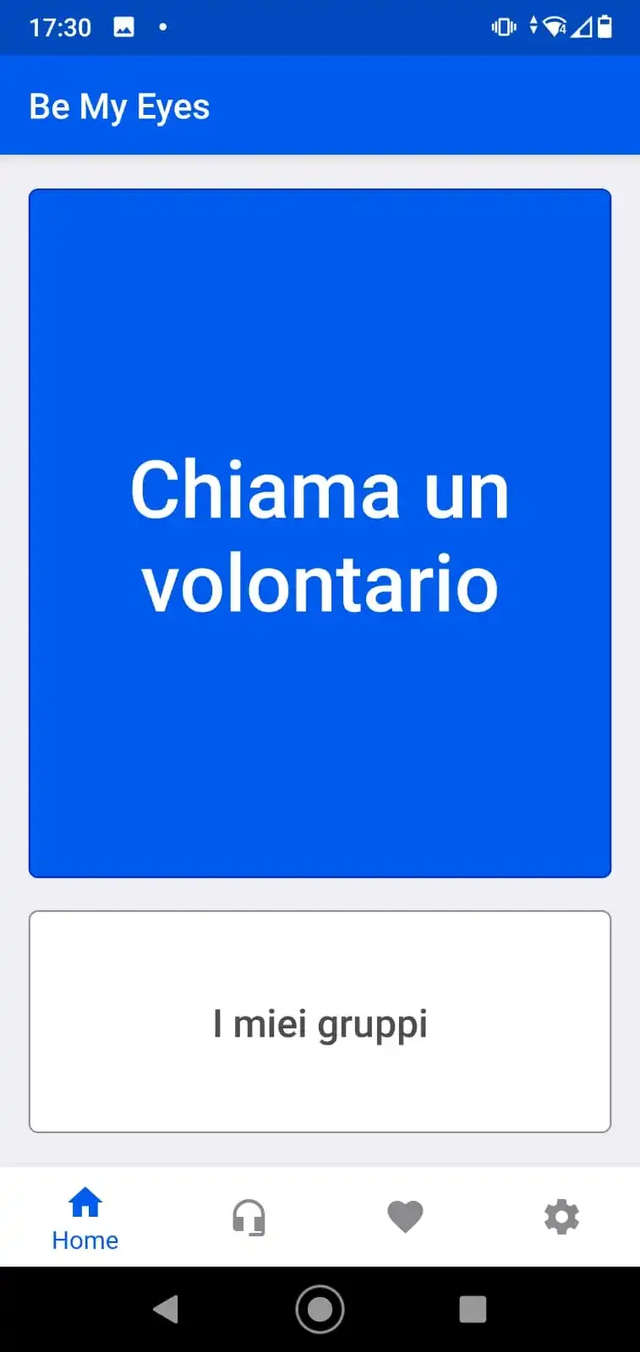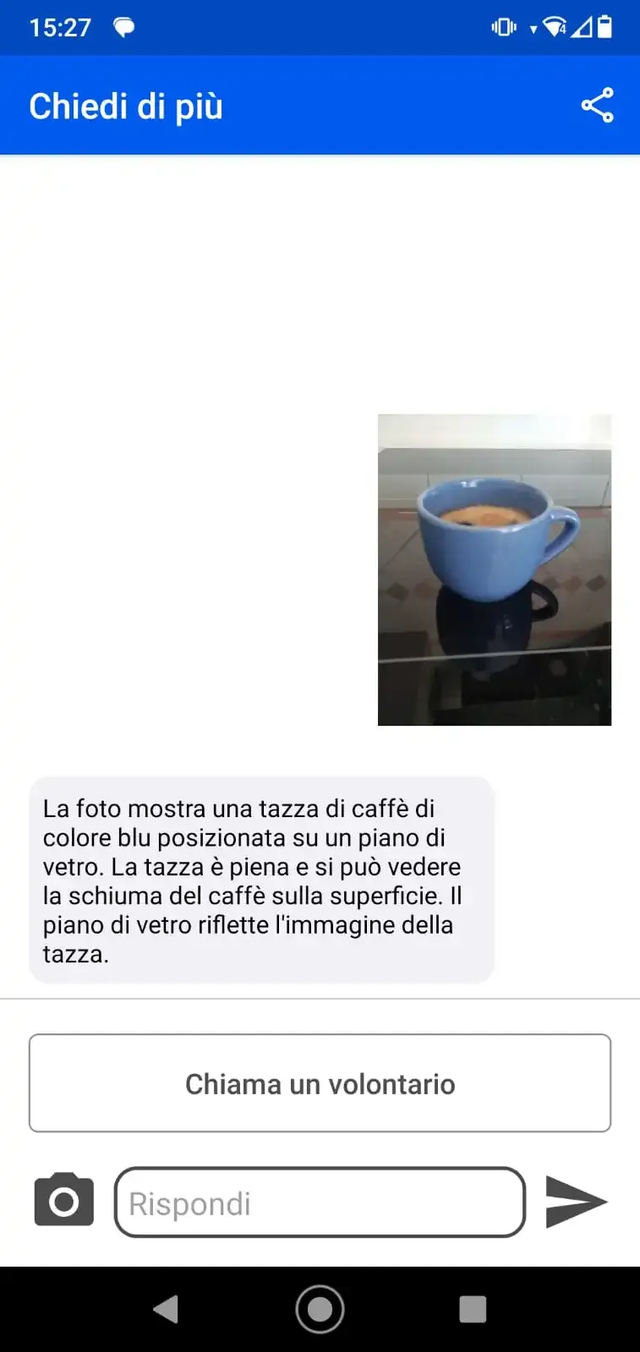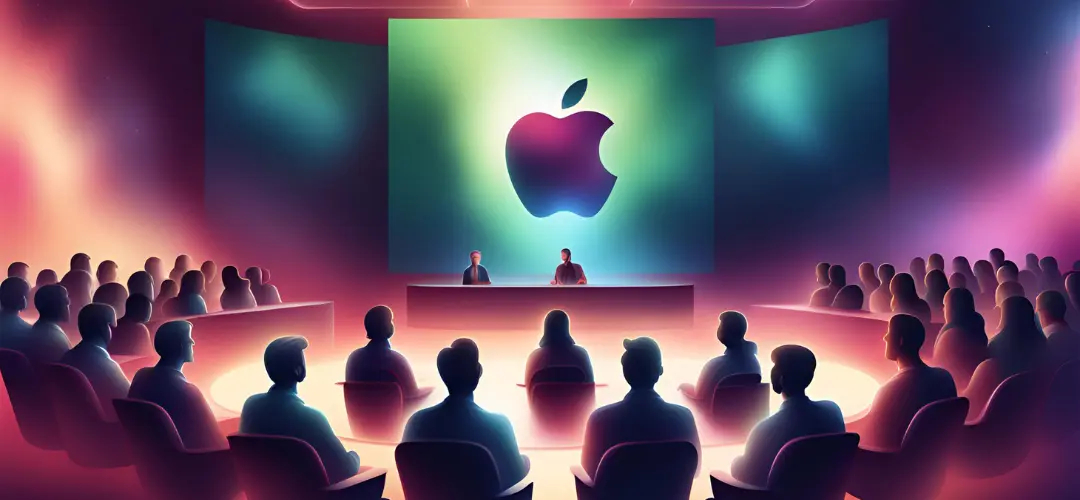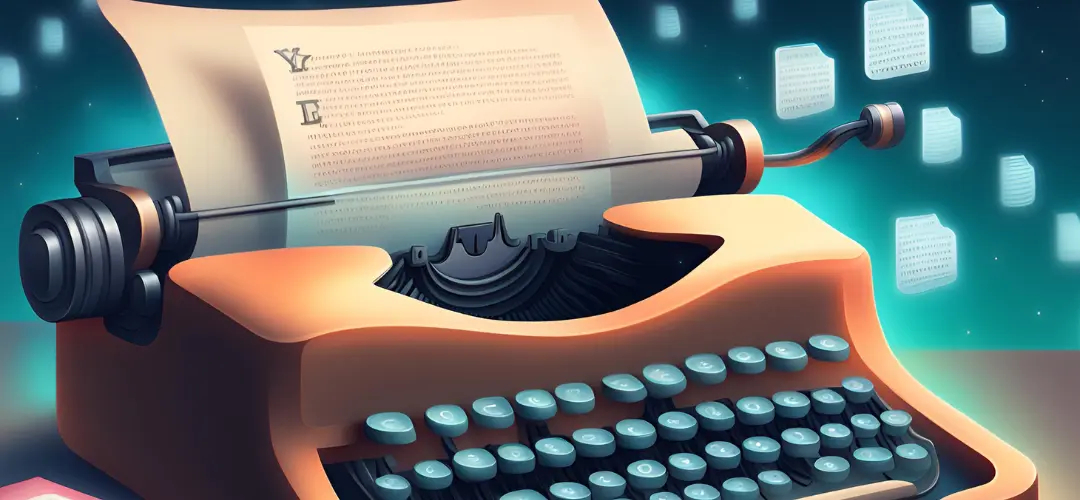Be My Eyes: The AI breakthrough for accessibility
Samuel Capano - 2024-07-10
In 2025, as the European Accessibility Act takes effect, standards for digital accessibility will be elevated. Learn how the Be My AI app, opens new frontiers for digital inclusion by laying the foundation for an accessible future.
In 2025, a new European legislation, the European Accessibility Act (EAA), which imposes more stringent requirements on digital accessibility, aiming to make online products and services more accessible. This law is an important step toward inclusion, extending accessibility obligations to more private and public entities and integrating accessibility considerations from the early stages of digital product and service development.
The increasing integration of artificial intelligence in application development and everyday services presents us with new challenges and opportunities. In this context, applications such as Be My Eyes and its new Be My AI feature, which use artificial intelligence to assist blind people, demonstrate how technology can be turned into a tool for inclusion.
Read the article to learn how these innovations not only open new doors for access to information but establish a bridge to a future where no one is left behind.
Index
- Artificial intelligence and accessibility
- What is Be My Eyes
- Difference and comparison between Be My Eyes and the Be My AI function.
- So which is better: Be My Eyes or Be My AI?
- Uses of the app
- Limitations
- Privacy risks
- Conclusions
Artificial intelligence and accessibility
Artificial intelligence is absolute evil: didn't Terminator or the various dispostic novels teach you anything?
Or could AI lend us a hand, not only in doing homework but ensuring accessibility to services and goods that otherwise would be missed? It could teach us English, for example with the Praktika app, or even be our eyes on the world.
And I don't just mean that he could arrange targeted trips based on our tastes and aptitudes or create photo albums for us based on what we need. It could be our eyes in every way. What do I mean by that? Read on and you will find out!
We think of the intelligences that are the oldest oldest and best known, such as Siri or Alexa, that make information accessible; remember the Amazon device advertisement in which a woman in front of an open window asks "what's the weather like today?" hinting that she is blind, and the Amazon device responds that it is raining and suggests she take an umbrella? Over time these have evolved and Artificial Intelligence as we know it now was born through OpenAI with the aim of creating an AI that is "friendly" and from which people can benefit. This means that it was born to be accessible and to simplify accessibility to goods, services, and knowledge that would otherwise be difficult to obtain.
Think of a blind person who would like to choose an accessory to wear but cannot see it. How can she do that? For "reading" there is already suitable technology (Google Lens or the Finger Reader), but in more complex situations how can she look around?
One efficient solution is the Be My Eyes app.
Artificial intelligence and accessibility
What is Be My Eyes
Be My Eyes is a free app, available for both Android and iOS, with the purpose of helping people who are blind or visually impaired.
This app relies on a community made up of blind, visually impaired and volunteers working together to make the world more accessible. The goal is to leverage technology to "bring sight" to everyone.
Although the concept of accessibility is increasingly present in today's reality, some situations may still pose challenges for some of us.
Think of a crowded train station, with a bustle of people and trains, in a situation that would be stressful and difficult for anyone, a blind person might not be able to get to his or her train.
That's where the Be My Eyes app comes in, which allows it to tell what's around the user in real time, read the timetable board, and guide the user, avoiding luggage, litter (and pigeons if you're in Milan's Central Station) to the correct seat. All this thanks to a very large community in its classic function and OpenAi artificial intelligence in the Be My AI function. This app, which can be downloaded on virtually any smartphone, has the ability to make accessible what otherwise would not be.
Difference and comparison between Be My Eyes and the Be My AI function.
Once you download the app from Google Play or the App Store, when you first log in you are asked which category you belong to: people who are blind and visually impaired or volunteers.
Be My Eyes, how the classic mode works
If you are in the first category, a blue button will appear on the main screen that says "Call a volunteer." Pressing it will start a video call to all available volunteers who speak the same language as the caller.
Screen from app
You may be wondering, "okay the button is giant but how can a blind or visually impaired person see it?" The answer is that new smartphones are quite accessible, having built-in screen readers and voice commands while for more specific needs terminals have been created specifically for the blind and visually impaired, such as the Liliphone.
The video call will be outbound only, partly because the reverse would be an unnecessary waste of resources, and only the first volunteer to answer will be connected to the call thus seeing what is being shared on the other end. At this point the volunteer will answer the caller's questions.
The example you see by signing up as a volunteer (and be sure to do so that, as they write on their site, it is not a burdensome commitment indeed "Please don't worry if you are busy when you get a call-another volunteer will take the call.") in the mock tutorial call a blind user says, by touching two different colored scarves placed on a table, that he would like to put on the red one, the volunteer simply answers him which one he should take. That's the beauty of the app, it can be used for really anything, to know if you are dressed right, to have help if you drop your house keys, to know where a window is to have the air changed or what is written on a sign. "Hi, can you tell me if the milk is expired?" "Am I presentable for a first date?" "Where did I put my car keys?" Okay maybe the last question will never get asked....
Be My AI, how the smart mode works.
As mentioned at the beginning of the article, OpenAI artificial intelligence is supposed to be "friendly" and inclusive; therefore, when it was created, it was also thought that it could improve accessibility to some services.
So it is.
Within the Be My Eyes app is a service in beta phase called Be My AI that relies on this technology. In this section you can take a picture and after a few moments, actually several moments, you will receive a very accurate description of what was photographed.
I gave it a try for you with my greatest passion: coffee. The description is very precise and attentive to detail. In addition to specifying the color of the cup, it also describes the top on which it is resting the fact that this reflects its image. Once you have the outcome of the photo you can choose whether to take another one or have more details. Choosing the second option will open a ChatGPT-based chat where you can ask more questions, share the chat, upload more photos, or call a volunteer.
Be My AI the response from ChatGPT
In the chat, one can ask both questions pertaining to the photo ("Is there also a teaspoon?") and different or more specific questions, such as "Where can I buy such a cup?" Artificial intelligence will be ready to answer each question.
So which is better: Be My Eyes or Be My AI?
Let's examine the pros and cons of both services.
Be My Eyes
PRO:
- Human contact: making a call to someone you do not know helps inclusiveness on the one hand and the development of an idea of active participation on the other;
- More detailed: a flesh-and-blood person can provide more detail immediately than an artificial intelligence;
- More intuitive: the volunteer can intuit what the blind or visually impaired person wants to be described to him or her, without dwelling on unnecessary details;
- Personal opinions: you may receive partial information, "Which dress is prettier?"
- Video call: the fact that communication is by video call allows you to receive more info about the surrounding area, exactly as if you were seeing it. This can also mean being guided by the volunteer through streets, alleys, or crowded areas.
CON:
- Schedules: calls to volunteers cover a time slot from 8 a.m. to 9 p.m. (of the receiver) and directed only to those who speak the caller's language. This means that outside the time slot, it becomes difficult to find someone who can answer, especially if you speak a language that is not well studied;
- People: people are always a pro and a con. They are Forrest Gump's box of chocolates; you never know who you are going to get. You might get a person who is easygoing and accurate as you might get the occasional troll.
Be My AI
PRO:
- Always Active: You have no time limitation or guilt of "maybe I am disturbing someone."
- Detailed advice: in some cases after taking a picture you want to have some extra details that a person cannot give on the spot. For example, if you take a picture of a monument you will be able to ask the AI when it was built and by whom;
- Accessibility: Once a photo is taken, one can ask if a particular service is accessible. Think of a bakery, the blind person might ask if there are any steps or objects that might prevent him or her from entering or moving around without getting hurt, upon answering yes he or she might continue the conversation by asking if there is an accessible bakery in the area;
- I refer the call back to volunteers.
CON:
- Personal Opinions: being an Artificial Intelligence can never give a personal opinion or advice on what to choose;
- Focus: AI may focus on unnecessary details compared to the wishes of the blind or visually impaired person
Making an examination of the pros and cons of both versions, the most correct thing to say is that they are complementary; where one cannot go, the other comes. Certainly Artificial Intelligence still has some way to go to be able to give the answers that are expected, but it already represents a great step forward for inclusion.
Uses of the app
Everyday life for people who are blind or visually impaired is the same as ours; they too have passions and desires, such as playing the guitar, cooking or traveling. Sometimes the lack of accessibility or services suitable for everyone, however, can impair the quality of life.
Be My Eyes can guide a person in choosing a manual of music suitable for him, or her, it can alert them whether the flour in front of them is soft or hard wheat, or it can guide them through a crowded station to their platform.
Limitations
Like all social matrix apps, the risk to privacy is high. It could happen that the user asks for support for medications or unwittingly shows sensitive data, such as a bank account, prepaid card information, or one's ID.
Be My Eyes itself asks users to be extremely careful when sharing this data, relieving itself of any responsibility.
Privacy risks
Like all social matrix apps, the risk to privacy is high. It could happen that the user asks for support for medications or unwittingly shows sensitive data, such as a bank account, prepaid card details or one's ID. Be My Eyes itself asks users to be extra careful when sharing this data, relieving itself of any responsibility.
Conclusions
Be My Eyes is, in my opinion, one of the most useful and innovative apps in the field of accessibility. It is one of those apps that is good for everyone, both the blind and visually impaired and the volunteers, helping to create an accessible community for all.
Plus it shows the friendly and helpful side of artificial intelligences. Do and do yourself good, download and register for Be My Eyes.
Samuel Capano
The author of this article, Service Manager (but at heart a QA Tester) has worked at Ulixe since 2016. Passionate about technology, horror movies, and satire he finds it great when these three things are mixed together! Approached the IT world thanks to 8bit consoles and writing thanks to satire. In his spare time he writes for the satirical group Kotiomkin and published his first book "A Crystal World" with Montag Editions.
Back to our blog to read Samuel's upcoming articles!
See More Posts
Get in touch
Ulixe Group S.r.l. Copyright © Ulixe Group S.r.l. | Lungo Dora Pietro Colletta, 67, 10153, Turin, Italy | VAT IT03305250122 | Rea Number TO1173020
